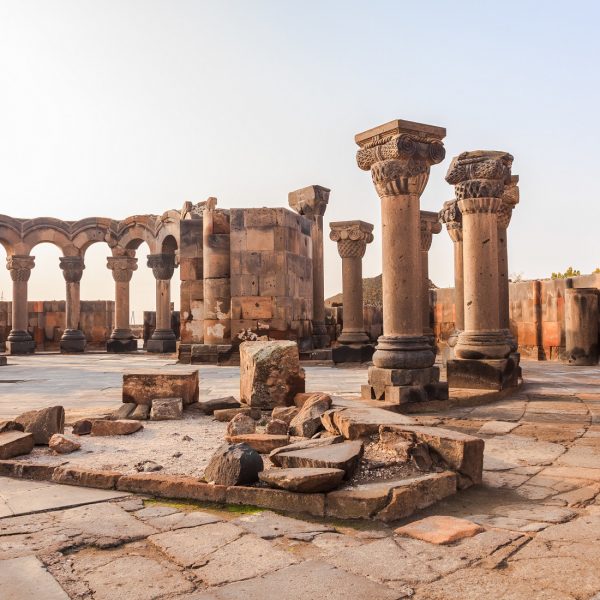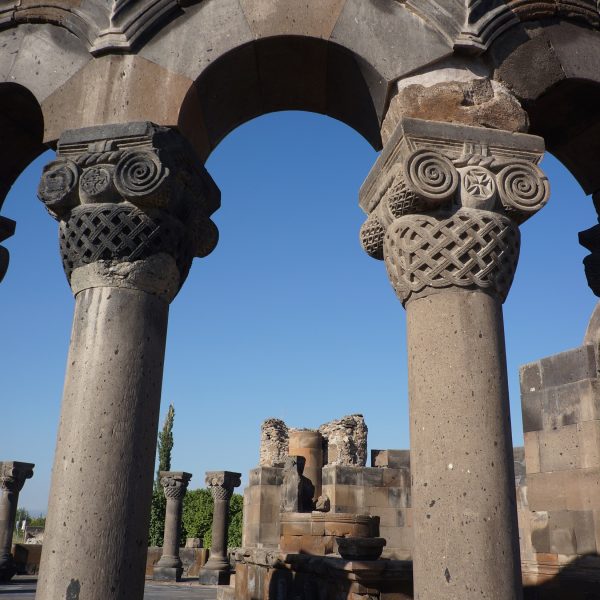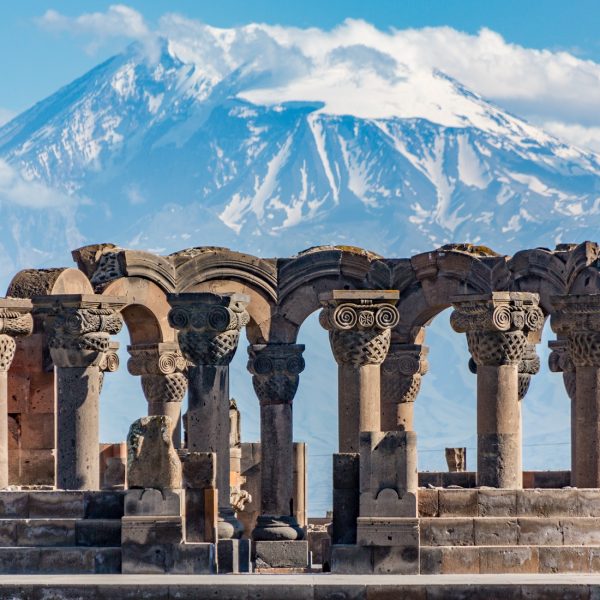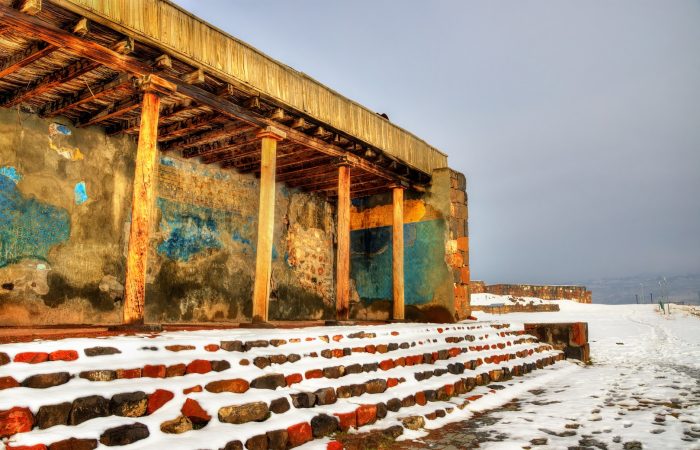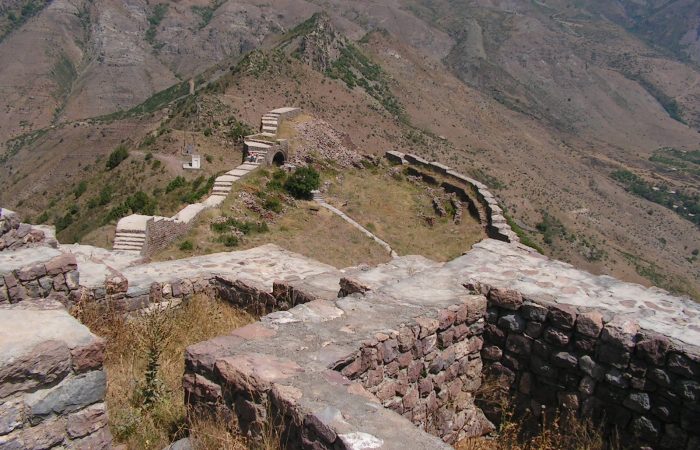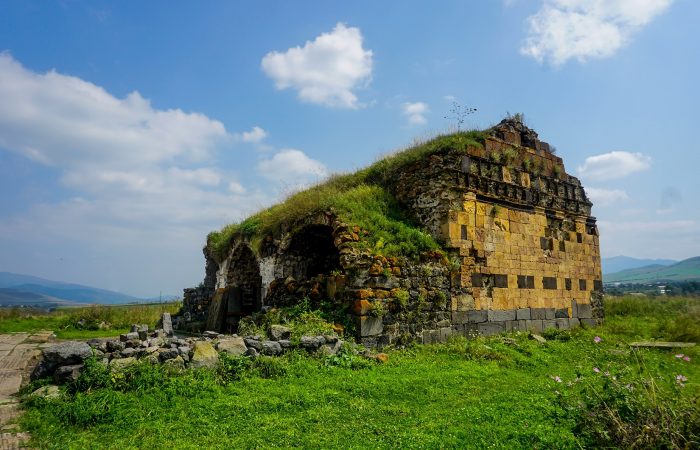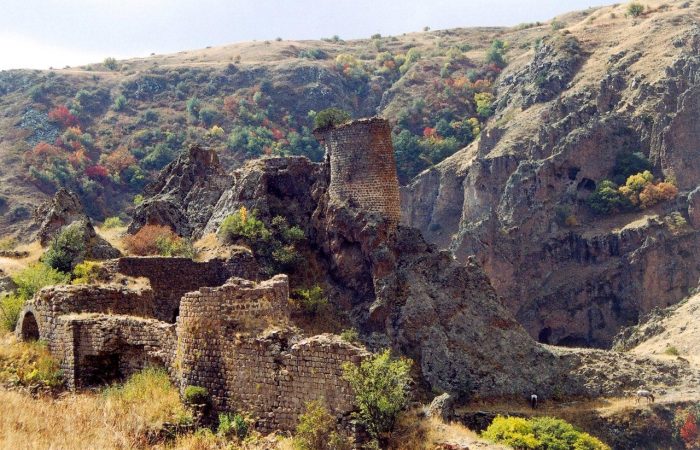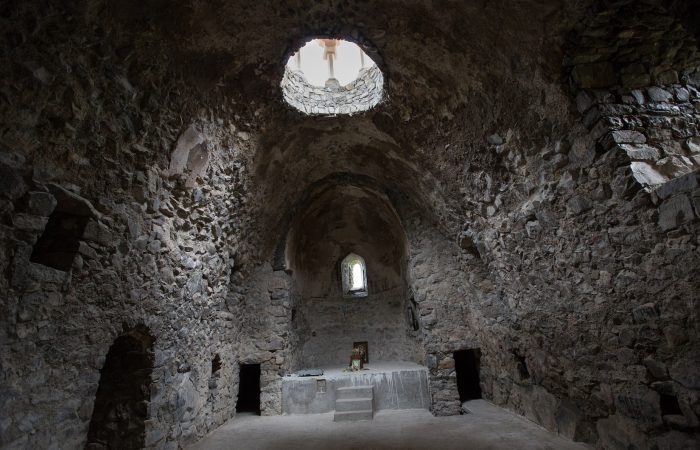Zvartnots Cathedral: History
The excavations have revealed that the place where the cathedral was built used to be a center of worship. There used to be an Urartian Temple, which was replaced with a basilica in 301 (after Christianity was adopted), and in the 5th-6th centuries the latter was replaced with a single-nave basilica.
The Cathedral of Zvartnots was presumably built in 643-652 by Catholicos Nerses the Builder who was known so for the myriad of churches and monasteries he built during the years he was the Catholicos of All Armenians, that is during (641-661). The construction of Zvartnots Cathedral was launched in 643 two years before which he had moved the Church Seat to Zvartnots.
After Grigor Lusavorich passed away, some of his relics were buried in the cathedral, and the cathedral therefore came to be known as Surb Grigor.
The cathedral is cylindrical and represents a cruciform central domed type building with four equal cross wings. It was once 45-49 meters high.
Zvartnots Cathedral: Legend and Etymology
The Cathedral of Zvartnots is believed to be built in the place where as the historians claim, Grigor Lusavorich (Gregory the Illuminator) met Armenian King Tirdates III and where the latter was converted to Christianity by Grigor Lusavorich. It was also then that Armenia adopted Christianity (301) and became the first country to adopt it as a state religion.
There are basically two explanations to the naming. The first suggests that the root of the naming is “zvartun” (զվարթուն), which meant an angel. The first explanation assumes that the cathedral was dedicated to the angels. According to the second explanation, the naming is related to the pre-Christian word “zvartonk;” zvartonk was the spirit that awakened the dead.
Zvartnots Cathedral: Composition and Decoration
Though the Cathedral of Zvartnots comes with a circular design, it is thought that it depicts God’s hand with the palm on the east and the five fingers on the west. In contrast to the pagan traditions the main altar is on the eastern part. In the center of the cathedral, right under the dome an opening was made in the ground. Stone stairs take to the opening. It’s where the relics of Saint Grigor Lusavorich were buried.
The cathedral was richly decorated with bas reliefs and frescoes. Unfortunately, much of the inner decoration has not been preserved, yet the preserved pieces are enough to conclude how interestingly and magnificently it was decorated. The floor used to be covered with a mosaic parts of which can be seen today.
The surfaces of the facades, edges, window casings and cornices included carvings of pomegranate and grapes with pomegranate symbolizing fertility and grapes symbolizing Gods blood and Resurrection. On some of the cathedral’s capitals, there can be seen the carvings of an eagle, which symbolized victory, strength and resurrection in the Ancient and Medieval period. An old pre-Christian legend has it that the eagle could awaken the dead.
The number of masters who built the cathedral is counted 32, and it is assumed that the portraits of the men found on the 32 facets of the cathedral depict exactly them. The images of the masters is a rare thing as in general only the first letters of the masters were being carved, while in this case there are the images and next to each image there is either the complete name of the master or only the first letter. Only nine of the twelve images have been preserved.
Zvartnots Cathedral: The Fall
As said at the very beginning, the Cathedral of Zvartnots was built with the goal to stand firm for the next thousand years, yet it had a life for only 320 years, until the tenth century. There is no account for the reasons why or how the cathedral fell into ruins. There are two assumptions, though;
- It was caused by a disastrous earthquake – This assumption of the possible earthquake is more probable. Also the excavations revealed traces of great fires, which, in all likelihood, were an attempt to destroy the cathedral.
- It was caused by Arab invasions – Probably during their invasions Arabs had removed the strategic base-stones, and not being able to stand its own heaviness the cathedral eventually collapsed.
Zvartnots Cathedral: Palace
The palace of Zvartnots Cathedral is where Catholicos Nerses the Builder resided and from where led the struggle against Arabs, Byzantines and the remnants of paganism.
The palace includes two wings – eastern and western. The western wing includes summer and winter halls with wooden and vaulted roofs, respectively, while the eastern wing includes rooms, bath, a fifth century single-nave church and a column-hall facing the cathedral.
Adjacent to the palace’s throne hall there used to be the wine storage. There are also medieval jars made of local clay. The jars were made in a way as to lean to one side while fermenting the wine and to stand upright as the wine was ready.
Excavations held in 1931 showed that to the south of the bath there was a winery, which was among the later additions to the palace.
Zvartnots is currently in a ruined state, and its exact layout is still a matter of dispute. But even in its ruined state the cathedral is amazing and is a must-visit place for people who enjoy visiting and exploring piece of architectural wonders. The Cathedral is but an entire complex representing an architectural wonder where other than the mentioned buildings, you will also see jars and fertility stones (of special interest is phallus, the fertility stone), Urartian King Rusa II’s cuneiform inscription and the sun dial.
The entrance to the cathedral is not free of charge. For kids the ticket costs 100 Dram, for adults 250 Dram and for foreigners 700 Dram. Guided tours are available. A guided tour in Armenian will cost 1000 Dram and in a foreign language 2000 Dram.

